The BCD that I have used the most both recreationally and as an instructor is the Oceanic Biolite BCD.
The Biolite is a travel BCD, which means it is lightweight and streamlined, and easy to fold:
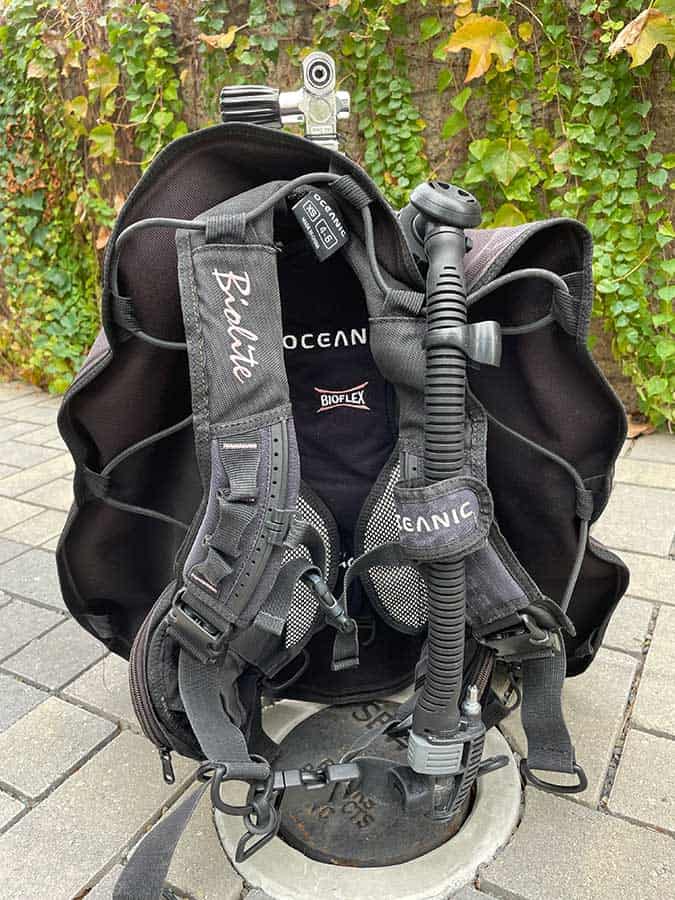
The Biolite is a complete BCD 
Yet, it is easy to ‘fold’ and pack for travel
It is also very simple (not a lot of extras or accessories), with a limited lift capacity.
While the Biolite is certainly not seen as a top-of-the-line BCD, it was the best choice for me and has lasted me over 5 years of traveling and teaching scuba in California.
Here’s why:
Diving Environment
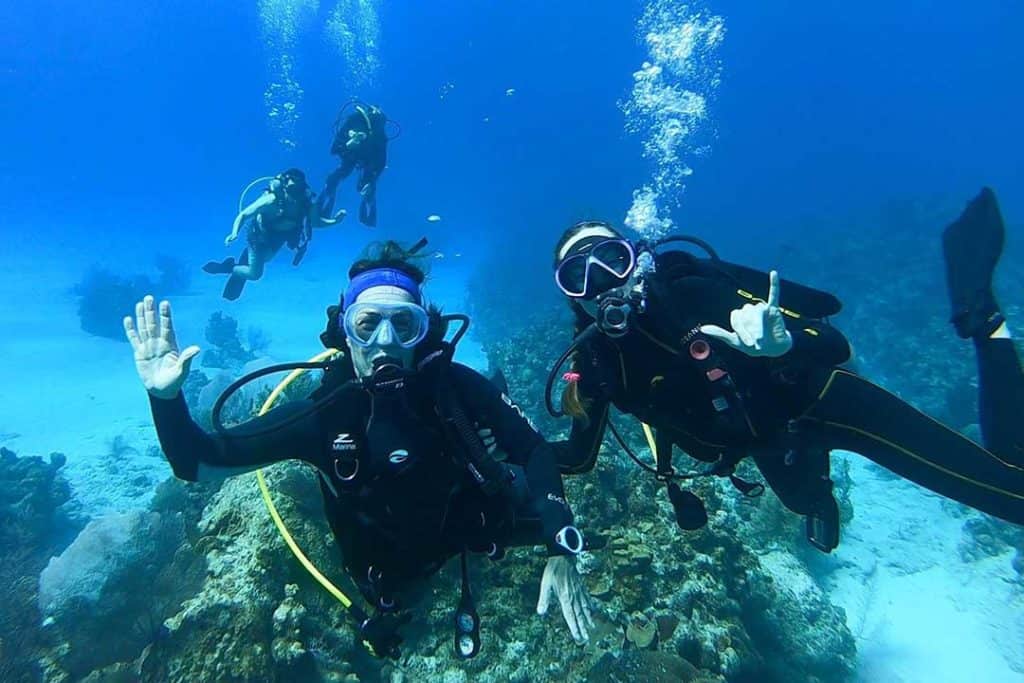
What will the water temperature be?
In colder temperatures, divers have to wear more thermal protection, which means more weight.
Does the BCD you’re looking at accommodate this? Is there often strong current or surge where I’ll be diving?
Swimming against a current is difficult, and a BCD with a larger surface area will increase your drag and make things harder.
Your BCD should fit snugly, and have a streamlined shape.
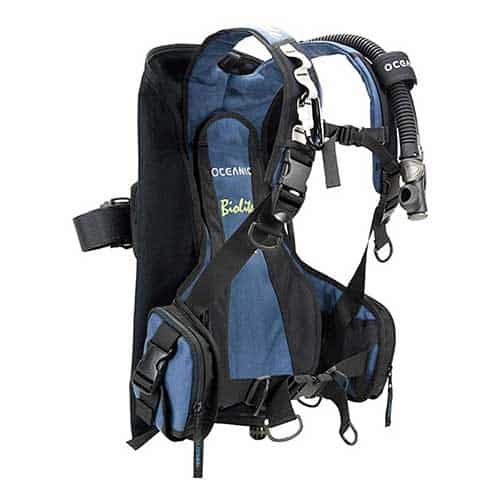
What activities will I be participating in?
If you will carry accessories like an SMB, reel, flashlight, camera, or collection bag for your dives, make sure the BCD you’re considering is structured to allow an easy way to hold these items.
These are just a few questions that you could ask yourself about whether a BCD works for your dive environment needs.
I am a resident of California; California divers are self-reliant.
This is reflected by the majority of them owning all of their gear and being knowledgeable about that gear.
It also tends to mean there is an understanding of the terrain and conditions often found at their favorite dive sites, and purchasing gear for themselves that works best to dive there.
California diving can also include spearfishing, wreck diving, beach diving, lobster diving, night dives, and some other specialties or hunting that each require specific equipment.
Many divers have tried some or all of these, and have at one point owned gear for it.
In other words, I am surrounded by rugged divers with equally rugged gear, and have owned a few iterations of dive gear, myself.
For the most part, my core dive kit (which hasn’t changed in 5 years) matches this California ruggedness.
My Biolite BCD is small and lightweight, though – so how has it held up so long in such a rugged environment?
If I had only been considering the Biolite BCD as an avid California diver, I may have gone with another option.
However, when I purchased this BCD, I was new to California diving and often traveled to warmer climates for my scuba adventures (still do).
I loved that this BCD was small (it only weighs 5.5 pounds) and that it folded up compactly to shove into a suitcase or backpack because it lacks a stiff backplate structure (this is honestly the feature that sold me on it!).
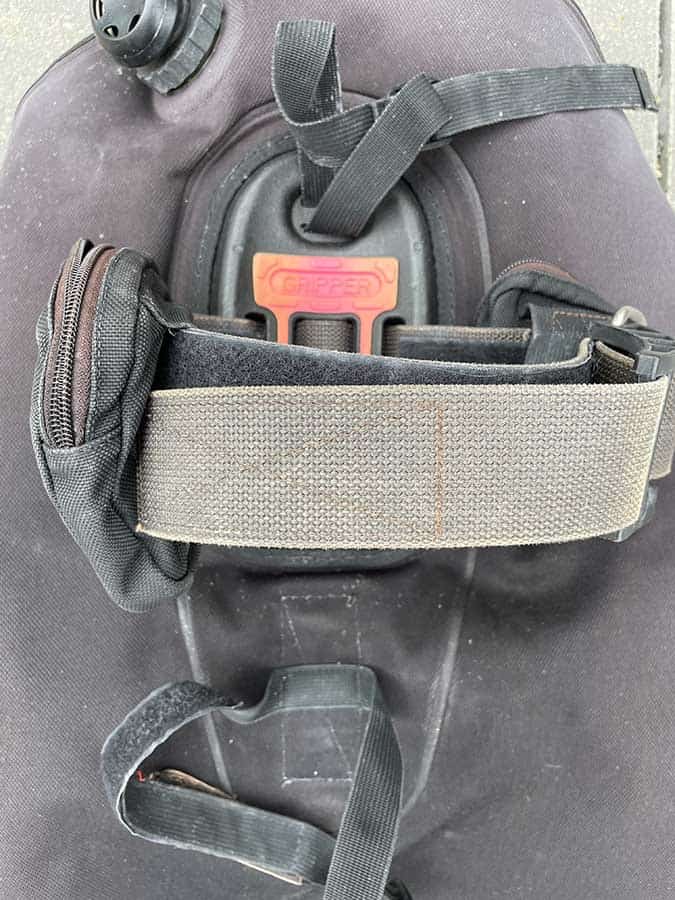
It was the perfect travel BCD for me, and I also knew that, thankfully since I’m small, it would work for me in California’s rugged dive environment.
I looked at the Biolite BCD as my “introductory” BCD purchase, and figured I would purchase a new one within a couple of years if I started diving more. But I have yet to let it go!
Lift Capacity
How much weight can the BCD handle? How much does it need to handle for you?
This is where the Biolite BCD will not work for many people unless it is strictly being used for warmer diving environments.
The Oceanic Biolite only holds 20-24 pounds of weight in its pockets (up to 7 in each of the built-in quick-release pockets near the hips and up to 5 in each of the removable tank strap weight pockets).
In the smaller sizes, the lift capacity is 32 pounds, and in the larger sizes it is 38 pounds.
The amount of lift capacity required depends on weight and volume (and depth), which you learn in divemaster training, but generally recreational divers do not need to do any serious lift capacity calculations to purchase a BCD.
As a (very general) rule, a diver should purchase a BCD that has about 10 pounds more lift capacity than the amount of weight that will be carried in the pockets.
This is usually easy to do, as BCDs are manufactured with appropriate lift capacity for general diver weight and height categories.
The average diver shouldn’t need more than 30-55 pounds of lift for recreational purposes, but if you get into tech diving with doubles, etc, lift requirements increase.
If you are unsure if a BCD’s lift capacity works for you and your dive needs, the local shop you purchase from will definitely be able to recommend the right lift!
Shape of the BCD
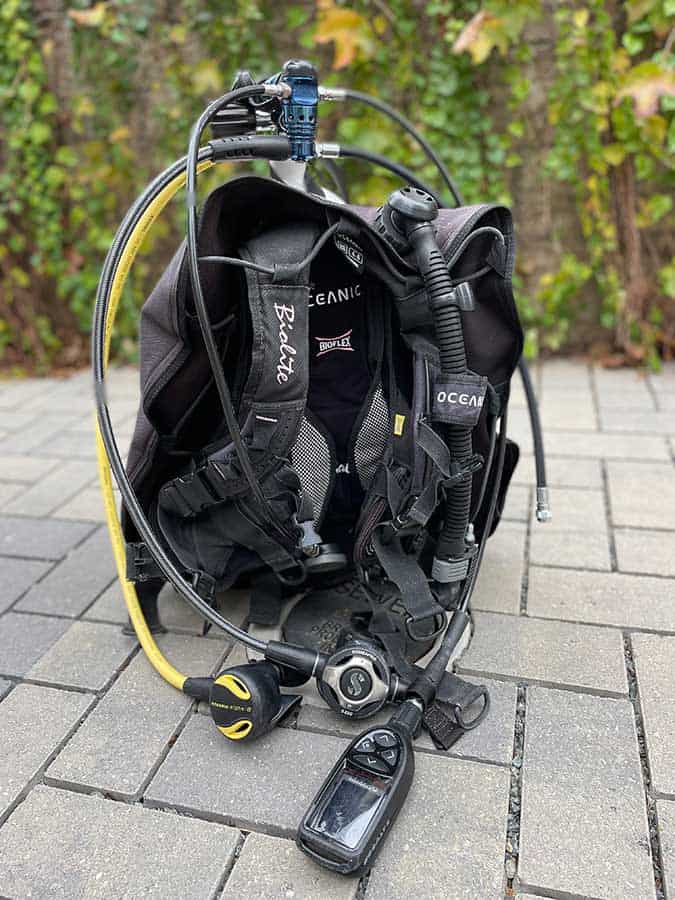
Jacket style or wing style?
Unless you are a student, my answer to this is always wing style. Jacket style BCDs are very bulky and inhibit balanced trim.
In my opinion as an instructor and a diver of over 10 years, divers should not purchase jacket style BCDs without a specific reason for needing that shape to help hold you upright underwater instead of in trim.
Preference
That being said, I’m sure there are some divers out there that disagree and love jacket style BCDs.
Maybe that is your personal preference, or just what you know! Either way, I definitely encourage a wing style to epitomize your trim and freedom of movement, reduce drag, and leave room for accessories!
Many BCD setups allow for modular add-ons or personalizations like color kits.
Some BCDs offer ample webbing space to slide on D-rings, pockets, clips, or bungies, and others use space to add cushion or padding for comfort.
Note the capabilities you may need your BCD to have for any activities you want to try, or prioritize fit and comfort if you are a nervous diver.
Make room for your preferences when you purchase a BCD, because you may end up using it for years longer than you planned to (like me!).
My preference is for simple design, snug fit, and durability.
The Biolite worked for me wonderfully in these categories, and I would certainly consider buying it again if the need arose for me to replace my current BCD.
The only thing I would note that could be improved upon – replaceable weight pockets.
The weight pockets are built in, and mine have stretched out from use.
This means that eventually, they will be too stretched out to keep weight in them, and I will need to wear a weight belt or replace my BCD even though everything else is functioning well!

Materials vs Price
What justifies the price of the Biolite BCD
Generally, price relates to brand and to the materials used in the gear’s construction.
The Biolite is made out of a durable Cordura fabric, which is certainly why it has lasted so long in the tougher California dive environment (and the tough environment of my gear bag – I am not known to take great care of my stuff!).
It is also on the mid- to low-end range of price for BCDs. Therefore, the Biolite is a great compromise between durability and price if the travel style BCD works for your needs.
If you’re spending a great deal on your BCD, consider why. If you’re going with the cheapest BCD possible, consider what you’re getting for that price.
Your local dive shop can tell you what materials and features justify the price of the BCD you’re considering – all you have to do is ask!
If you prefer doing your own research, check out the gear overview and the specs pages of the item you want on the manufacturer website.
You will start to see trends in material vs price, and all of those numbers will begin to have meaning for you in choosing the right gear.
Choosing the right BCD (buoyancy compensation device) can be one of the best ways to improve your comfort and movement underwater.
A frequent diver should choose a BCD that fits snugly and makes them more streamlined, which reduces drag underwater and allows for freer movement.
It should also, of course, be comfortable!
The perfect size and style of BCD will vary per person, based on a variety of factors. To pick the best BCD, a diver should consider:
- The diving environment they will be using it for
- The lift capacity required (how much does the diver weigh and how much weight do they wear?)
- The shape of the BCD in conjunction with other gear the diver uses
- Personal style preference (some people like tons of pockets or bright colors, some prefer to minimize extras!)
- The materials and durability compared to the price
Final words
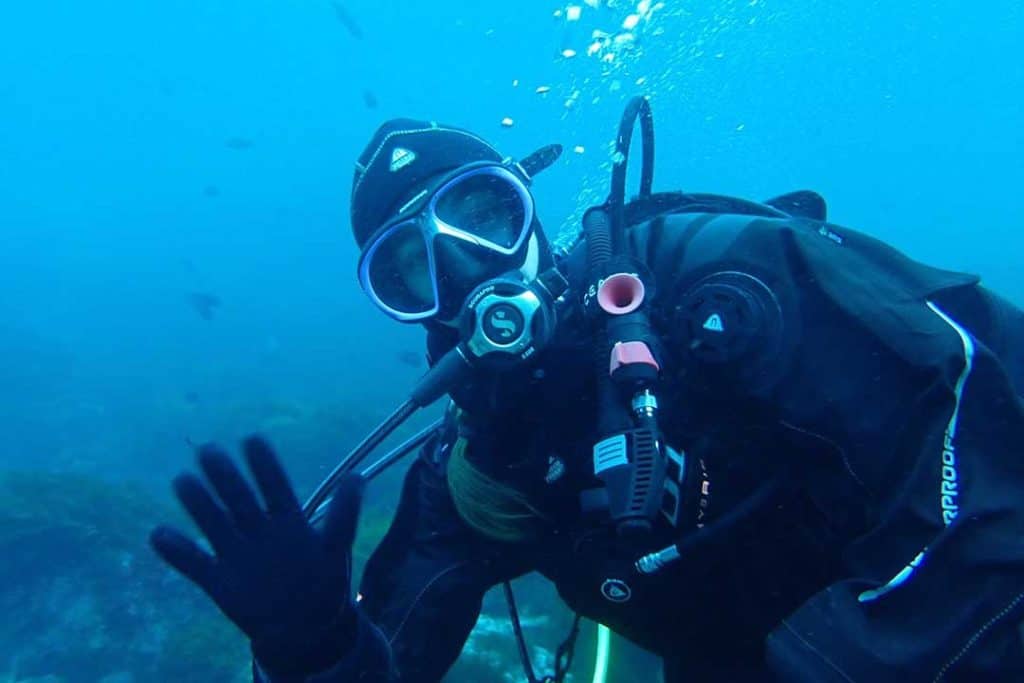
My durable, simple, inexpensive, compact Biolite BCD has been perfect for me. 5 stars!
If you have any questions or comments about choosing the best BCD for you, please comment below.
Hi , best review so far that I have read on Biolite! What kind of weight where you carrying in the weight pocket ?Soft pellet pouches or solid rectangular weight used on belt ? Did you loose any because of pouch stretching ? Are the weight pouches removable or replaceable ? Finally did you find that the tank was secure ( ie not moving while diving )despite the small plate ? Thanks and greeting from canada !!! 🙂